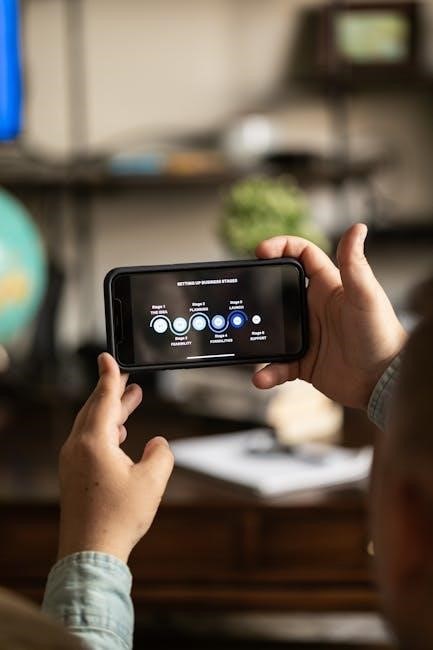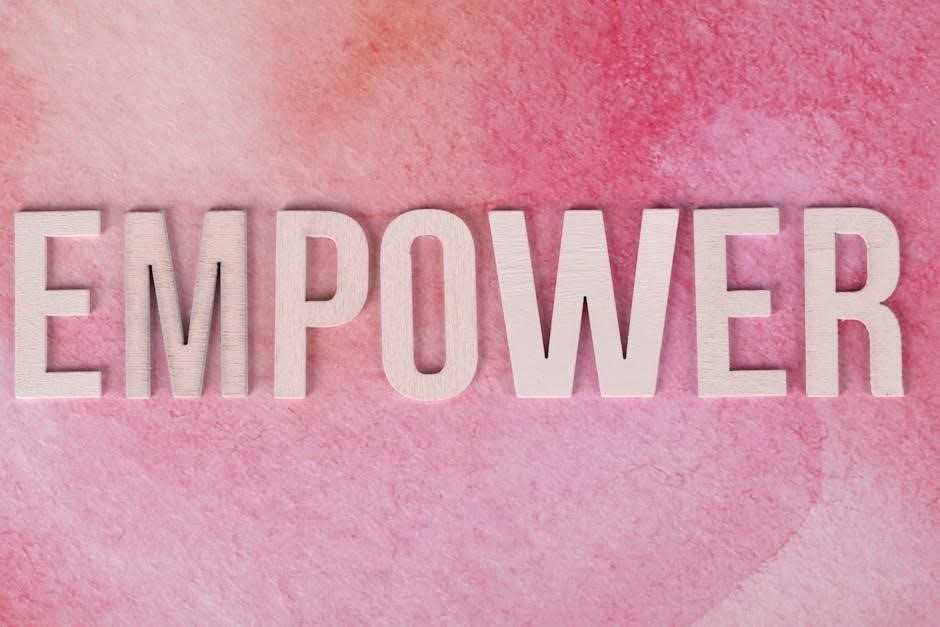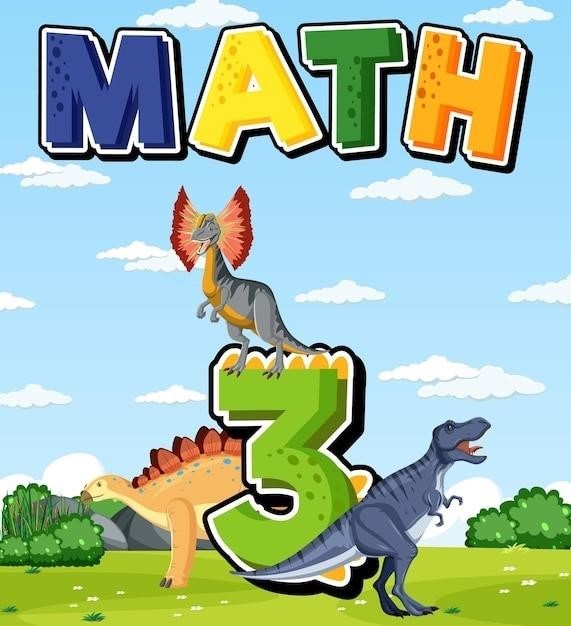IEP progress reports track a student’s growth toward meeting their individualized goals, ensuring compliance and providing detailed insights for parents and educators. They are typically provided three times annually, including two written reports and one IEP meeting, to monitor and adjust educational strategies effectively. These reports often include work samples, data analysis, and specific examples of student progress, aligning with the IEP goals and objectives set for the student.
1.1 What is an IEP Progress Report?
An IEP progress report is a document that tracks a student’s advancement toward meeting their Individualized Education Program goals. It is typically provided three times annually, including two written reports at the end of each trimester and one during an IEP meeting. The report includes work samples, data analysis, and specific examples of progress, ensuring alignment with the student’s IEP objectives. It serves as a tool for educators, parents, and guardians to assess the effectiveness of the student’s educational plan and make necessary adjustments. The report also ensures compliance with legal requirements and provides a clear overview of the student’s growth, helping to inform future instructional strategies. It is often supported by downloadable templates to streamline the reporting process.
1.2 Importance of IEP Progress Reports
IEP progress reports are essential for tracking a student’s growth toward their individualized goals. They ensure accountability and compliance with legal requirements, providing a clear record of progress. These reports enable parents, educators, and guardians to collaborate effectively, making informed decisions about the student’s education. By documenting achievements and challenges, they help identify areas needing adjustment, ensuring the IEP remains relevant and effective. Progress reports also foster parental involvement, offering transparency and detailed insights into the student’s development. They serve as a vital tool for monitoring the effectiveness of instructional strategies and supports. Ultimately, IEP progress reports are crucial for ensuring students receive the tailored support they need to thrive academically and personally.

Components of a Good IEP Progress Report
A good IEP progress report includes clear goal tracking, detailed data analysis, relevant work samples, and specific documentation to demonstrate student growth and alignment with IEP objectives effectively.
2.1 Goal Tracking and Measurement
Goal tracking in IEP progress reports involves monitoring student progress toward specific objectives, ensuring alignment with the established annual goals. Regular assessments and data collection methods, such as work samples and observable benchmarks, are used to measure advancement. This process helps educators evaluate whether the student is on track to meet the goals by the end of the IEP year. By documenting progress systematically, teachers can identify areas of strength and weakness, facilitating timely adjustments to instructional strategies. This ensures the student receives targeted support, maximizing their potential for achieving the outlined objectives effectively.
2.2 Data Collection and Analysis
Data collection and analysis are critical components of IEP progress reports, providing a clear understanding of a student’s advancements. Teachers gather data through various methods, including assessments, quizzes, and classroom observations; This information is then analyzed to determine if the student is making expected progress toward their goals. Work samples and documentation of student performance are often included to support findings. By aligning data collection with IEP objectives, educators can ensure that the results are relevant and actionable. Regular analysis helps identify patterns, strengths, and areas needing improvement, allowing for informed decision-making and adjustments to instructional strategies. This systematic approach ensures that progress reports are both accurate and meaningful.
2.3 Work Samples and Documentation
Work samples and documentation are essential for illustrating a student’s progress in IEP reports. These materials provide concrete evidence of achievements and challenges, offering insights into skill development over time. Teachers often include examples of assignments, projects, and assessments, which are directly tied to specific IEP goals. Documentation may also encompass notes on student behavior, participation, and performance during lessons. By organizing these samples and records, educators can create a comprehensive narrative of the student’s journey. This approach not only supports data-driven decision-making but also engages parents and other stakeholders in understanding the student’s growth. Effective use of work samples and documentation ensures that IEP progress reports are thorough, transparent, and aligned with individualized objectives.

Writing an Effective IEP Progress Report
Writing an effective IEP progress report requires clarity, specificity, and alignment with the student’s goals. It should clearly communicate achievements, challenges, and next steps, ensuring the report is informative and actionable.
3.1 Understanding the Audience
Understanding the audience is crucial when writing an IEP progress report. The primary audience includes parents, teachers, and administrators who need clear, concise information to support the student’s education. Parents, in particular, require detailed yet accessible updates to stay informed about their child’s progress. Reports should avoid jargon and present data in an understandable format, ensuring all stakeholders can engage effectively. Additionally, the report should be structured to guide future IEP development, making it essential to tailor the content to meet the needs of both educational teams and families. This ensures collaboration and alignment in supporting the student’s growth and goals.
3.2 Clarity and Specificity in Reporting
Clarity and specificity are essential in IEP progress reports to ensure all stakeholders understand the student’s advancements and challenges. Reports should avoid vague statements, instead using precise language to describe progress, such as “increased reading fluency by per minute” or “demonstrated improved behavior in 8 out of 10 instances.” Including concrete examples, like work samples or data points, strengthens the report’s clarity. Aligning observations with specific IEP goals ensures relevance and focus. This approach helps parents and educators identify areas needing adjustment and celebrate successes, fostering collaborative decision-making. Clear and specific reporting also aids in tracking growth over time, ensuring the student’s needs remain a priority in their educational plan.
3.3 Aligning Reports with IEP Goals
Aligning progress reports with IEP goals ensures that the documentation directly reflects the student’s advancements toward their individualized objectives. Each report should clearly reference the specific goals outlined in the IEP, providing measurable data to illustrate progress. For example, if a goal focuses on improving reading comprehension, the report should include test scores, work samples, or observational data showing improvement. Tools like MCPS Form 272-5 or Polaris help maintain this alignment by structuring reports around goal-specific metrics. This ensures that progress is meaningful and directly tied to the student’s educational plan. Regularly reviewing and updating reports based on goal progress also aids in future IEP development, making the reporting process both informative and actionable for all stakeholders involved.

Examples of IEP Progress Reports
Examples of IEP progress reports include downloadable PDF templates like the MI Detroit Public Schools template, showcasing academic and behavioral goals with work samples and data analysis.
4.1 Academic Goal Examples
Academic goal examples in IEP progress reports often include specific, measurable objectives, such as improving reading fluency or mastering math problem-solving skills. These examples are documented with concrete data, like the number of words read correctly per minute or the percentage of accurate math solutions. Work samples, such as writing assignments or test results, are frequently attached to support progress claims. For instance, a report might detail a student’s advancement in reading comprehension, highlighting increased accuracy in answering questions. These examples are presented in a structured format, often using charts or graphs to visually represent growth over time. They provide clear evidence of whether the student is on track to meet their annual goals, helping educators and parents adjust strategies as needed. This documentation ensures accountability and fosters collaboration in supporting the student’s educational journey.
4.2 Behavioral Objective Examples
Behavioral objective examples in IEP progress reports focus on measurable improvements in a student’s conduct and social interactions. These objectives are often tied to reducing disruptive behaviors, such as decreasing tantrums or interruptions, and increasing positive actions, like raising hands to speak or initiating peer conversations. Progress is tracked through specific metrics, such as incident logs or frequency counts, and documented with concrete examples. For instance, a report might highlight a reduction in classroom disruptions from five times a week to two, or an increase in voluntary participation in group activities. These examples are crucial for assessing progress and making necessary adjustments to behavior plans, ensuring the student receives tailored support to meet their behavioral goals. Regular updates and feedback loops are essential to monitor and celebrate improvements effectively.
4.3 Practical Templates for Download
Practical templates for IEP progress reports are essential tools for educators and parents to document student growth effectively. These templates often include sections for goal tracking, data analysis, and work samples, ensuring a comprehensive overview of progress. Many templates, such as the MCPS Form 272-5, are designed to align with legal and compliance standards, providing a structured format for reporting. Websites like n2y offer downloadable resources, including the Polaris IEP development solution, which includes sample reports that showcase student growth and compliance. Printable templates, such as the MI Detroit Public Schools Progress Report, offer customizable options for tracking academic and behavioral objectives; These resources are invaluable for ensuring consistency, clarity, and thoroughness in progress reporting, making it easier to monitor and adjust educational strategies for student success.
4.4 Compliance-Ensured Sample Reports
Compliance-ensured sample reports provide educators and parents with structured templates that align with legal and regulatory requirements. These reports are designed to ensure accurate and detailed documentation of a student’s progress toward IEP goals. Examples include the MCPS Form 272-5, which focuses on quarterly progress tracking, and n2y’s Polaris solution, offering compliant IEP goal reports. These samples often include sections for data collection, work samples, and explanations of progress measurements. They are tailored to meet state and federal guidelines, ensuring transparency and accountability in reporting. By using these compliance-ensured templates, educators can provide clear, concise, and legally sound documentation, which is essential for parent communication and future IEP planning.

Compliance and Legal Requirements
IEP progress reports must adhere to legal standards, ensuring accountability and transparency. Federal and state regulations mandate regular reporting, aligning with IEP goals and parental rights, to maintain compliance.
5.1 Reporting Frequency and Methods
IEP progress reports are typically provided three times a year, with two written reports at the end of each trimester and one IEP meeting. Schools use standardized forms like MCPS Form 272-5 to document progress, ensuring consistency and compliance. Progress is reported through work samples, data analysis, and detailed explanations aligned with IEP goals. Parents receive updates on their child’s academic and behavioral growth, with methods including mailed reports, digital platforms, and in-person meetings. This structured approach ensures parents are well-informed and involved in their child’s educational journey, fostering collaboration between educators and families to support student success.
5.2 Ensuring Parental Involvement
Parental involvement is crucial for a student’s success, and IEP progress reports are designed to keep parents informed and engaged. Schools ensure parents receive detailed updates on their child’s progress toward IEP goals, often through mailed reports, email, or online portals. Parents are encouraged to review these reports, ask questions, and provide feedback. Regular communication, such as parent-teacher conferences and IEP meetings, further strengthens collaboration. By involving parents in the reporting process, educators ensure a unified approach to supporting the student’s growth and addressing any challenges promptly; This partnership fosters a supportive environment where parents can actively contribute to their child’s educational development.

Tools and Resources for IEP Progress Reporting

IEP progress reporting is supported by tools like MCPS Form 272-5 for quarterly updates and Polaris by n2y, offering downloadable templates to ensure compliance and track growth effectively.
6.1 IEP Development Solutions
IEP development solutions streamline the creation and management of progress reports, ensuring compliance and efficiency. Tools like Polaris by n2y offer comprehensive platforms for tracking student growth and generating detailed reports aligned with IEP goals. These solutions often include features for data collection, goal setting, and progress monitoring, making it easier for educators to document and share student advancements. Additionally, many IEP development solutions provide printable templates and guides to assist in writing and reviewing reports effectively. By leveraging these resources, educators can create thorough and compliant IEP progress reports that foster collaboration and clear communication with parents and stakeholders.
- Software solutions like Polaris by n2y simplify IEP progress reporting.
- Features include data tracking, goal alignment, and report generation.
- Printable templates and guides support compliance and clarity.
6.2 Printable Templates and Forms
Printable templates and forms are essential tools for creating structured and compliant IEP progress reports. Resources like MCPS Form 272-5 and the OP6A Progress Report Form provide frameworks for documenting student progress, modifications, and accommodations. These templates ensure consistency and alignment with IEP goals, making it easier for educators to track and communicate student growth effectively. Additionally, platforms like n2y’s Polaris offer downloadable samples of IEP goals reports, which can be tailored to individual student needs. These resources are invaluable for maintaining clear and organized records, facilitating collaboration between educators and parents, and ensuring that progress reports meet legal and educational standards.
- MCPS Form 272-5 and OP6A are popular templates for progress reporting.
- Templates ensure alignment with IEP goals and compliance requirements.
- Downloadable samples from platforms like Polaris support customization.

Best Practices for Progress Reporting
Best practices include regular updates, clear communication, and collaboration between stakeholders to ensure reports align with IEP goals and provide actionable insights for student growth.
7.1 Regular Updates and Feedback
Regular updates and feedback are essential for monitoring student progress and ensuring the effectiveness of the IEP. Schools typically provide progress reports three times a year, with two written reports and one IEP meeting. These updates include specific data on goal achievement, work samples, and behavioral observations. Feedback should be clear, actionable, and aligned with the student’s IEP objectives. Parents and educators collaborate to review progress, discuss challenges, and adjust strategies as needed. Regular communication ensures that the student’s needs are consistently met and that the IEP remains relevant. This continuous process helps identify areas of strength and areas requiring additional support, fostering a proactive approach to education planning. Consistent updates also ensure compliance with legal requirements and maintain transparency for all stakeholders involved. By prioritizing regular feedback, educators and parents can work together to support student growth effectively. This collaborative effort ensures that the student’s progress is consistently tracked and reported, providing a clear path forward for their education. Regular updates and feedback are vital for the success of any IEP, as they allow for timely adjustments and ensure the student’s needs are always addressed. The frequency of these updates is designed to provide ongoing insights into the student’s development, helping to guide educational decisions and maintain alignment with their goals. Through regular communication and collaboration, the IEP progress reporting process becomes a powerful tool for student success. By staying informed and engaged, all stakeholders can contribute to the student’s growth and achievement. Regular updates and feedback are not just a requirement but a cornerstone of effective IEP implementation, ensuring that every student receives the support they need to thrive. The consistent exchange of information between parents, educators, and students fosters a supportive and goal-oriented educational environment. As a result, regular updates and feedback play a critical role in the overall success of the IEP process, enabling students to reach their full potential. By maintaining open lines of communication and regularly reviewing progress, stakeholders can address challenges promptly and celebrate achievements; This approach ensures that the IEP remains a dynamic and adaptable document, tailored to the student’s evolving needs. Regular updates and feedback are essential for ensuring that the IEP is implemented effectively, providing students with the resources and support they need to succeed academically and behaviorally. Through consistent reporting and collaboration, educators and parents can work together to create a personalized and impactful educational plan. The importance of regular updates and feedback cannot be overstated, as they are the foundation upon which the success of the IEP is built. By prioritizing these practices, schools can ensure that every student’s progress is carefully monitored, and their educational goals are within reach. Regular updates and feedback are the cornerstone of effective IEP implementation, ensuring that every student’s needs are met and their progress is celebrated. Through consistent communication and collaboration, educators and parents can work together to create a supportive and goal-oriented educational environment. Regular updates and feedback are not just a requirement but a vital component of the IEP process, enabling students to achieve their full potential. By staying informed and engaged, all stakeholders can contribute to the student’s growth and success. The consistent exchange of information between parents, educators, and students fosters a collaborative and proactive approach to education. As a result, regular updates
7.2 Collaboration Between Stakeholders
Collaboration between stakeholders, including parents, educators, administrators, and sometimes the student, is crucial for the effective implementation of an IEP. Regular communication ensures that everyone is aligned with the student’s goals and progress. Parents provide valuable insights into the student’s home environment and behaviors, while educators offer expertise in instructional strategies and data analysis. Collaboration fosters a team-oriented approach, allowing for shared decision-making and problem-solving. This teamwork ensures that the student’s needs are consistently met across all settings. By working together, stakeholders can identify challenges early, adjust strategies, and celebrate successes. Effective collaboration also promotes accountability and transparency, ensuring that all parties are invested in the student’s growth. Ultimately, collaboration enhances the overall quality of the IEP and supports the student’s academic and behavioral development. It is essential for creating a cohesive and supportive educational environment.

Frequency and Timing of Progress Reports
Progress reports are typically provided three times annually, with two written reports at the end of each trimester and one during an IEP meeting.
8.1 Trimester-Based Reporting
Trimester-based reporting involves providing progress updates at the end of each academic trimester, typically three times per year. This approach ensures consistent monitoring of a student’s growth toward their IEP goals. Two written progress reports are mailed to parents at the end of each trimester, while the third update is shared during an IEP meeting. This method allows educators to track progress systematically and make necessary adjustments to instructional strategies or accommodations. Work samples, data, and documentation aligned with IEP goals are often included to provide clear evidence of student advancement. For example, MCPS Form 272-5 is used for quarterly progress documentation, ensuring alignment with the student’s IEP objectives and maintaining compliance with reporting requirements. This structured approach helps parents stay informed and engaged in their child’s educational journey.
8.2 Quarterly Progress Documentation
Quarterly progress documentation involves regularly updating parents and educators on a student’s advancements toward their IEP goals. This method ensures consistent and timely communication, often aligning with school district reporting cycles. Tools like MCPS Form 272-5 are used to document progress, providing a clear and structured format for tracking student growth. Work samples, data analysis, and specific examples of progress are included to support the report. Quarterly documentation helps identify areas where adjustments to instructional strategies or accommodations may be needed. Parents receive detailed updates, enabling them to stay actively involved in their child’s education. This approach also ensures compliance with reporting requirements and maintains a focus on student-centered goals. By documenting progress quarterly, educators can provide actionable insights and support continuous improvement. This method is widely used in IEP progress reporting to ensure transparency and accountability.
IEP progress reports are essential for tracking student growth, ensuring compliance, and guiding future planning, providing a clear summary of achievements and areas needing support.
9.1 Final Thoughts on Effective Reporting
Effective IEP progress reporting is crucial for tracking student growth and ensuring educational alignment with set goals. Regular updates, clear documentation, and collaboration among stakeholders are key to successful reporting. Utilizing templates like MCPS Form 272-5 and solutions such as Polaris can streamline the process, ensuring compliance and detailed progress tracking. By maintaining consistency and transparency, educators and parents can work together to support student development. Progress reports not only highlight achievements but also identify areas needing adjustment, fostering a collaborative approach to future IEP planning and goal setting.

Additional Resources
Explore downloadable templates like Polaris and MCPS Form 272-5 for IEP progress reports. Visit websites offering compliant samples and guides for effective reporting and documentation.
10.1 Websites for Downloadable Templates
Several websites offer downloadable IEP progress report templates, such as Polaris and n2y, which provide compliant and customizable forms. These platforms ensure alignment with legal standards and simplify reporting. You can also find examples like MCPS Form 272-5 for quarterly updates. Websites such as Detroit Public Schools and specialized educational resources provide free printable templates for academic and behavioral progress tracking. These tools often include sections for goal-specific data, work samples, and parent feedback, making it easier to monitor student growth. Additionally, many sites offer guides for writing and reviewing reports, ensuring clarity and effectiveness. These resources are invaluable for educators and parents seeking structured and professional progress reporting solutions.
10.2 Guides for Writing and Reviewing Reports
Guides for writing and reviewing IEP progress reports provide step-by-step instructions to ensure clarity and compliance. These resources often include tips for aligning reports with IEP goals, interpreting data, and incorporating work samples. Many guides emphasize the importance of clear, objective language and offer examples of effective phrasing. Websites like n2y and Polaris provide detailed manuals for using their templates, while educational districts offer forms like MCPS Form 272-5 for quarterly updates. These guides also cover how to involve parents in the review process and how to use progress reports to inform future IEP development. By following these guides, educators can create reports that are both informative and actionable, ensuring students receive targeted support.


